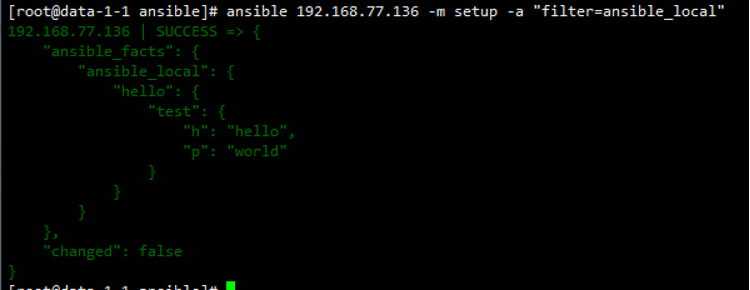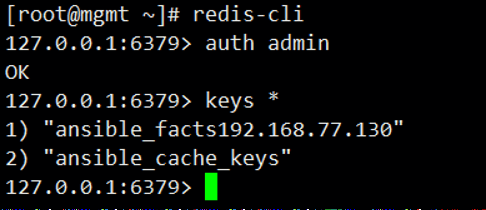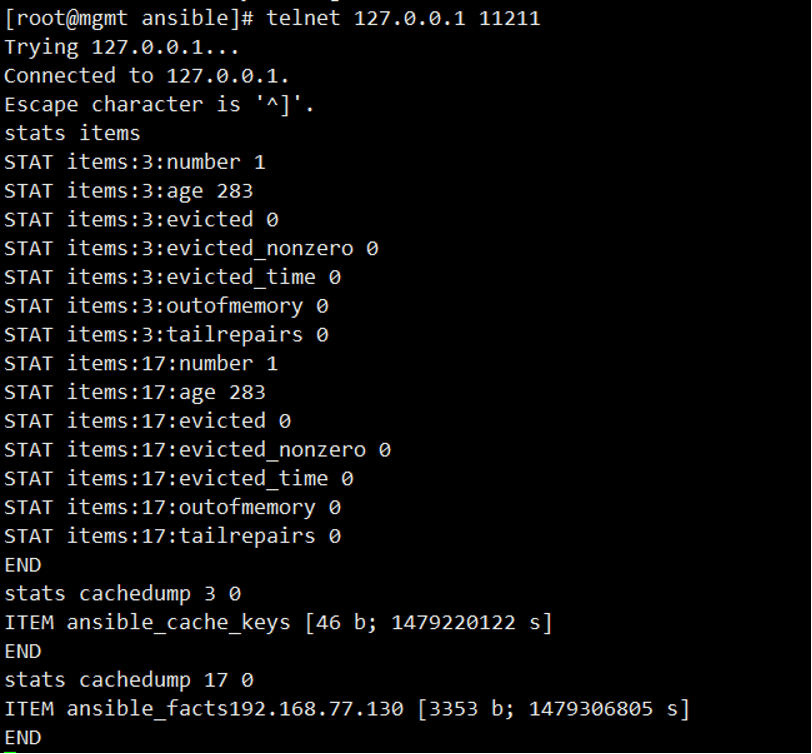Facts 是用来采集目标系统信息的,具体是用setup模块来采集得。
使用setup模块来获取目标系统信息
ansible hostname -m setup
仅显示与ansible相关的内存信息
ansible all -m setup -a 'filter=ansible_*_mb'
常用的变量
- ansible_distribution
- ansible_distribution_release
- ansible_distribution_version
- ansible_fqdn
- ansible_hostname
- ansible_os_family
- ansible_pkg_mgr
- ansible_default_ipv4.address
- ansible_default_ipv6.address
关闭自动采集
- hosts: whatever
gather_facts: no
自定义目标系统facts
在远程主机/etc/ansible/facts.d/目录下创建.fact 结尾的文件,也可以是json、ini 或者返回json 格式数据的可执行文件,这些将被作为远程主机本地的facts 执行

可以通过``方式来使用该变量

Facts 使用文件作为缓存
修改ansible配置文件
# /etc/ansible/ansible.cfg
fact_caching = jsonfile
fact_caching_connection = /tmp/facts_cache
mkdir /tmp/facts_cache
chmod 777 /tmp/facts_cache/
运行playbook
ansible-playbook facts.yml
查看缓存目录

上述文件中存储着json序列化的facts数据
Facts 使用redis作为缓存
安装redis
yum -y install redis-server
easy_install pip
pip install redis
配置redis,使用密码登陆
#vim /etc/redis.conf
requirepass "admin"
启动redis
service redis start
修改ansible配置文件
# /etc/ansible/ansible.cfg
gathering = smart
fact_caching = redis
fact_caching_timeout = 86400
fact_caching_connection = localhost:6379:0:admin
运行playbook
ansible-playbook facts.yml
查看redis内容

Facts 使用memcached作为缓存
安装 memcached
yum install memcached
easy_install pip
pip install python-memcached
启动memcached
/usr/bin/memcached -d -u memcached
修改ansible配置文件
# /etc/ansible/ansible.cfg
gathering = smart
fact_caching = memcached
fact_caching_timeout = 86400
fact_caching_connection = localhost:11211
查看memcached内容

更多文章请看 Ansible 专题文章总览